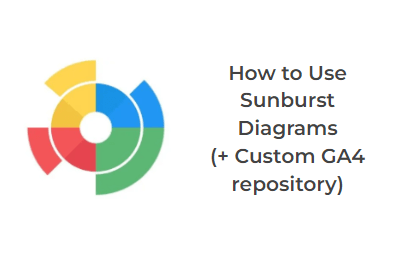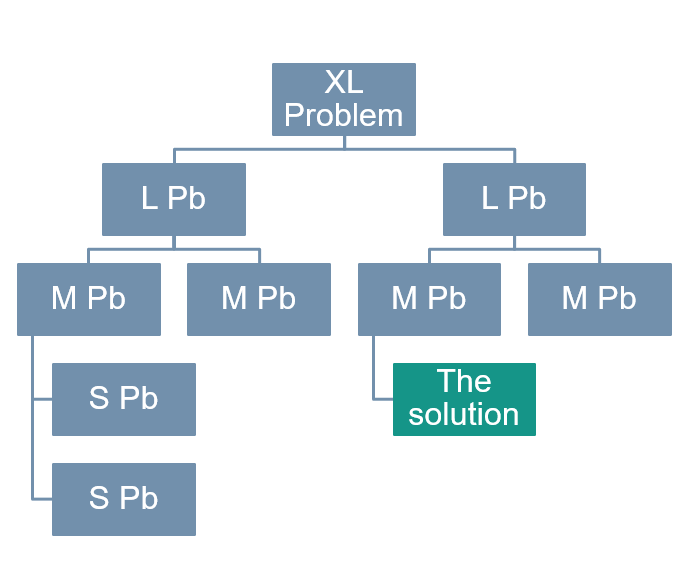As a Campaign Marketing Manager, you oversee email marketing campaigns since you are born and your management fully relies on you to carry out your operations, but how often have you managed to prove to them and to make sure your campaign goals are met?
As a marketing specialist, you are usually very proud, but especially a little anxious, when the time comes to click on the “Send” button. Especially because you spend many hours designing and selecting the right visual, the appropriate text, to set the campaign, to get the advice and approval of your boss. You are almost certain that your campaign will be a success, but it is very difficult to get the result and even more difficult to understand what worked well and what went wrong. And when you finally get to the beginning of an idea of why the campaign performed well or not, you’re out of time, you’re already in the next campaign.
1. Upstream and down, a campaign requires your time
Set clear and precise campaign goals
When you are in charge of preparing a new campaign, you probably know the objectives that you pursue, they are necessarily linked to a strategic decision: “increase sales” for example, with a performance objective: “+ 5% for March 2019 as well as + € 10 on average per basket “. These strategic elements are related to the primary and secondary objectives of your campaign, which could be (to follow our previous example: “focus sales on product B” as the main objective and “better convert customers under 30 years “as a secondary objective).
By clearly aligning the objectives of your campaign with those of the company, you will be able to involve more the people of your team, in the preparation phase but especially in the no less important phase of analysis of the results. You will be able to better understand your data by associating them directly with clear and consistent objectives at all levels.
Collect your campaign data
Post-campaign analysis is one of the last steps in the process that should not be overlooked. Depending on the volume of targeted contacts and the number of parameters you take into account, the complexity of your conversion tunnel, the number of channels, the approach will be different, and the relevance of the results will be more or less close to reality. But for all that, it will be necessary to dive into the heart of your data to make it happen.
Your CRM tool (Salesforce, Neolane, Mailchimp, SAP, Hubspot, Zendesk …), your Web analytics account (Google Analytics, Adobe …), some UX analysis tools (ContentSquare, CrazyEgg …) can be good aggregators of your campaign data. If this is the first time you do the analysis, doing an extraction on a good old Excel / Gsheet file can be one of the easiest ways to understand and build your analysis. There are now powerful and simple connectors to import and combine different sources in a simple spreadsheet (Supermetrics …)
Your dataset will normally include a number of quantitative elements (metrics) related to customer action volumes as well as parameter elements (dimensions) describing clients (age, device type, customer segment , …) . We must keep all this carefully!

2. And for the analysis, how do we do it ?
Analysis by comparison with a standard period or with a previous campaign
You now have your data, you know everything is there, but how from this huge amount of data be able to measure the impact of this campaign on product B and the under 30 years old prospects! The ideal is to be able to compare your performance over 2 periods of time or with a previous email campaign : you will compare two funnel with different data and analyze user behavior between these 2 campaigns. If you compare few days after the launch of the campaign and a few days before the launch of the campaign you won’t be able to compare the overall conversion funnel (you will miss the number of email, number of print, click,…). You will just be able to compare performance on the website. For this example, we will just focus on a comparison of 2 marketing campaigns.
Associate data with your conversion funnel
To begin your analysis, the first step is to clearly identify the steps of your conversion funnel. This will tell you at which stage you can allocate the uplift generated by your campaign. This is essential to know if the problem is more of a problem on the click rate of your email (mailing list probably poorly qualified) or a problem during the validation of the basket (probably a technical problem to this page or poorer performance of the customer segment targeted by your campaign compared to ordinary customers of your site or compared to previous campaign ), …
A very simple conversion funnel could be for example: Number of mail sent >> open >> clicked >> Converted >> Revenue generated »

Once your conversion funnel has been established, you will compare the conversion rates of your customers for each step of your conversion funnel on your both marketing campaigns (actual versus previous). At this stage, we try to compare the behaviour of the users targeted by the campaign compared to the behaviour of the users targeted by the previous campaign.
So we could graphically represent the performance of your campaign as follows:

This graph will tell you the different performance of your campaigns. For you curent campaign (campaign A) you sent -33% email compared to campaign B, your emails were less opened (31%) but this has been compensed by a better clik rate (+16%) and a better conversion rate (+13%)… This analyses only interprated the metrics of your campaign, at this stage you don’t have the dimensions analysis.
Dimension analysis:
Now that you know which part of your conversion funnel has been impacted the most between these two campaigns and generated the most revenue, you want to understand exactly why and make sure that the absolute value generated on this campaign is related to your goals. That is, we want to understand the impact of our customer’s characteristics on the results of the campaign. We want to determine for each stage of our conversion funnel if the performance is related to the age of our customers, their geographical location, customer segments, devices used, web browsers … all dimensions which are available on our dataset. We wish now to know and measure the importance of these parameters in the results of our campaign.
If you remember your dataset, all this element were represented in the dark green columns. Associated to the metrics (numbers of email sent, opened, clicked…) the dimensions were available.
By aggregating data by dimensions we can check the conversion rate from one step to another and understand for each segment the one that has converted the most in this campaign.
The tools of the market to carry out this dimensions analysis
When your dataset has plenty dimension it’s usually difficult to filter every dimension and each segment within each dimension to understand wich one has converted the most. There are tools on the market to perform this analysis, DataMa is one of them and allows you in a few clicks to accurately analyze the results of a marketing campaign and identify very quickly the achievement of your objectives. The tool allows you to understand the dimensions that are behind the results of your campaign, allowing you to pinpoint the segment and the dimension the most involved in the performance of your campaign. You could thus identify the performance of a particular segment, of a product specifically, compare the performance of your campaigns from one region to another, … each time identifying the dimensions that affect the difference that you compare. In that case, if you look at the click rate, the segment 2 performs 2,2 times better than other segments !

Who is Datama?
At Datama , we are passionate about improving online conversion through data mining. One of the biggest problems that our customers are regularly faced with is the ability to understand performance between two segments (for example, your campaigns) on a given KPI. So we created a solution that made their lives much easier … It’s fast, easy to understand and to communicate, it does not require any expensive BI tools and the result can be plugged into any data visualisation tool that already have (Table, PowerBI, DataIku, QlikView or even Excel …). We can set up a demonstration adapted to your business in a few hours … for free!
Datama is a company founded in October 2017 by Guillaume de Bénazé , a central engineer, joined in 2018 by Loïc, a graduate of Esme Sudria and a master at HEC. They have both a technical and business expertise through experiments in the field of analytics and consulting.
Datama already has several prestigious clients such as Pierre et Vacances Group, Voyage Privé, Kering, L’Oreal, ManoMano and AccorHotels. For the future, the firm has set itself the goal of quickly multiplying the analytical models it proposes to become the French leader in the Analytics as a Service market.










